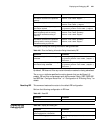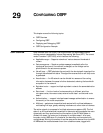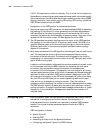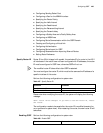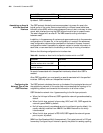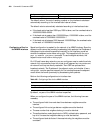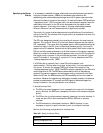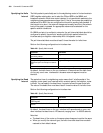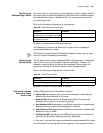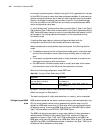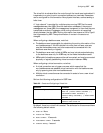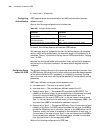
Configuring OSPF 429
Specifying the Router
Priority
It is necessary to establish the peer relationship manually between interfaces for
multi-point access network, (NBMA and broadcast type networks). But
establishing peer relationshipoccupies large amounts of system resources when
there are hundreds of routers in the network. To resolve this issue, OSPF specifies a
“designated router” (DR). All routers within the same network segment send the
relationship information to the DR, which broadcasts the link status of each
network segment. In this way, the number of the peer relationships between
different routers on the multi-access network is significantly reduced.
The priority of a router interface determines the qualifications of the interface in
voting for the DR. The interface with a higher priority is considered first when the
voting rights conflict.
The DR is not designated manually, but voted by all routers in the local network
segment. The routers of Priority>0 in the local network segment can be used as
the “candidates”. The router with the greatest priority value is selected among all
routers that claim to be DR. If two routers have the same priority, the one with
greater router ID is selected. Routers vote by Hello packet. Each router writes the
DR into the Hello packet and sends it to all other routers on the network segment.
When two routers in the same network segment claim to be the DR, the one with
the higher priority is chosen. If the priorities are equivalent, the one with higher
router ID is chosen. If the priority of a router is 0, it is not selected as the DR or
“backup designated router” (BDR).
If a DR fails due to a specific fault, a new DR must be elected, with
synchronization. This can take a long time, during which, the route calculation is
not correct. To shorten the process, OSPF puts forward the concept of the
“backup designated router” (BDR). The BDR is actually a standby for the DR and is
voted together with DR. The BDR also creates relations with all neighboring
routers in the network segment and exchanges routing information with them.
When the DR fails, the BDR becomes the DR immediately without the need for
re-election. Because the neighboring relationship is already created, this takeover
process is instantaneous. Of course a new BDR needs to be elected again but
during the election, the route calculation is not affected.
It should be noted that:
■ The DR in the network segment is not necessarily the router with the highest
priority. Similarly, the BDR is not necessarily the router with the second highest
priority.
■ The DR is a role in a single network segment, based on the router interface. A
router can be a DR on one interface and a BDR or DROther on another
interface.
■ The DR is elected on a broadcast interface or NBMA interface. It is not
necessary on a point-to-point interface or point-to-multipoint interface.
Perform the following configurations in interface view.
Table 493 Specify the Router Priority
Operation Command
Set the priority of the interface when
selecting a designated router
ospf dr-priority value
Return to the default router priority undo ospf dr-priority



